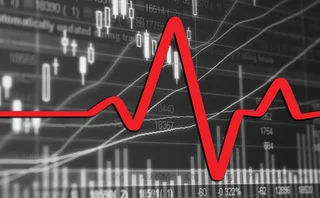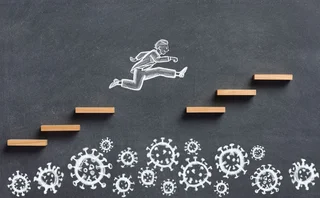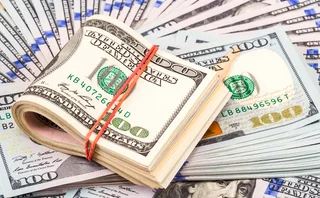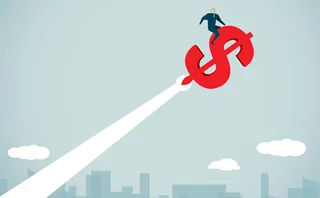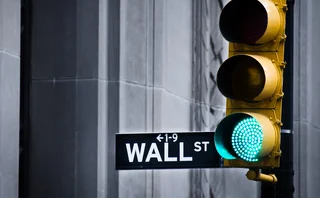
Hard times

Zip back to the middle of 2006. Credit spreads were tightening, equity markets were buoyant and there was ample liquidity sloshing around. House prices were continuing their meteoric rise, encouraging banks to increase loan-to-value ratios and, in some cases, loosen lending criteria.
Even then, there were plenty of warnings from regulators that this couldn't continue. In its biannual Financial Stability Report, for instance, the Bank of England drew attention on several occasions to the risks posed by a blow-out in credit spreads, a sudden drying up of liquidity and possible ripple effects across the economy. In particular, it pointed to the risks posed by complex, difficult-to-value instruments such as CDOs.
The central bank noted many senior bankers shared their concerns. And here's the thing: everyone knew that much of what has occurred over the past eight months - widening spreads, a decline in the value of CDO investments, and even the collapse of some hedge funds - would happen eventually. The trick was guessing when. Any bank chief executive that insisted on pulling out of the credit market in 2005, for instance, would have lost the bank billions in missed revenue - and likely with it, their job.
(That's not to say banks were justified in loosening underwriting standards in an environment that, in hindsight, looked unsustainable, or that banks should not review their risk management controls - only that competitive pressures made it difficult for firms to step back.)
What nobody had considered, however, was that the rise in subprime mortgage delinquencies would trigger a catastrophic domino effect - in particular, the rapid de-leveraging of balance sheets and, crucially, the complete collapse of confidence among banks and investors. While Bear Stearns had racked up nasty mark-to-market losses on its mortgage portfolio, it probably would have survived the crisis had it not been for the pulling of liquidity lines by anxious investors.
Interbank rates have once again soared, reflecting reluctance by banks to lend money - that's despite six rate cuts by the US Federal Reserve and various initiatives to pump liquidity into the money markets.
All in all, things are looking hairy. Rising oil and food prices threaten to push up inflation, while at the same time the US economy appears to be heading for recession. What's more, the actions of central banks appear to be ineffective, default rates look set to rise further - and not just in the subprime sector - and the dollar is tumbling.
There are lots of moving parts to this crisis, but until confidence returns to the banking sector, it's difficult to see what will kick-start a recovery. One thing's for sure - a recovery will come eventually. Just as with the start of the crisis, however, it is a question of investors getting their timing right.
Nick Sawyer, Editor.
Only users who have a paid subscription or are part of a corporate subscription are able to print or copy content.
To access these options, along with all other subscription benefits, please contact info@risk.net or view our subscription options here: http://subscriptions.risk.net/subscribe
You are currently unable to print this content. Please contact info@risk.net to find out more.
You are currently unable to copy this content. Please contact info@risk.net to find out more.
Copyright Infopro Digital Limited. All rights reserved.
As outlined in our terms and conditions, https://www.infopro-digital.com/terms-and-conditions/subscriptions/ (point 2.4), printing is limited to a single copy.
If you would like to purchase additional rights please email info@risk.net
Copyright Infopro Digital Limited. All rights reserved.
You may share this content using our article tools. As outlined in our terms and conditions, https://www.infopro-digital.com/terms-and-conditions/subscriptions/ (clause 2.4), an Authorised User may only make one copy of the materials for their own personal use. You must also comply with the restrictions in clause 2.5.
If you would like to purchase additional rights please email info@risk.net
More on Credit markets
Liquidnet sees electronic future for grey bond trading
TP Icap’s grey market bond trading unit has more than doubled transactions in the first quarter of 2024
Single-name CDS trading bounces back
Volumes are up as Covid-driven support fuels opportunity for traders and investors
Podcast: Richard Martin on improving credit migration models
Star quant proposes a new model for predicting changes in bond ratings
CME to pass on Ice CDS administration charges
Clearing house to hike CDS index trade fees from July after Ice’s determinations committee takeover
Buy side fuels boom in single-name CDS clearing
Ice single-name CDS volumes double year on year following switch to semi-annual rolls
Ice to clear single-name bank CDSs from April 10
US participants will be able to start clearing CDSs referencing Ice clearing members
iHeart CDS saga sparks debate over credit rules
Trigger decision highlights product's weaknesses, warns Milbank’s Williams
TLAC-driven CDS index change tipped for September
UK and Swiss bank Holdco CDSs likely inclusions in next iTraxx index roll, say strategists
